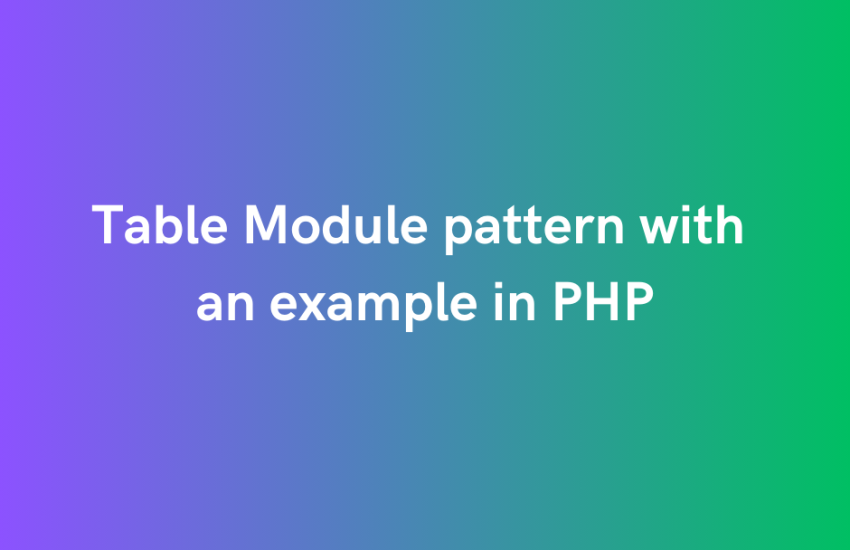The Table Module is a design pattern commonly used in object-oriented programming to organize and encapsulate the business logic related to a specific database table. It’s a way of grouping all the methods and functionality associated with a particular database table within a single class, referred to as the “table module.”
In PHP, you can implement the Table Module pattern by creating a class for each database table and including all the relevant methods and operations within that class. Let’s consider an example with a “users” table.
UserTable.php
class UserTable {
private $db; // Database connection
public function __construct($db) {
$this->db = $db;
}
public function getUserById($userId) {
// write the logic related to fetching a user by ID
return $userData;
}
public function createUser($userData) {
// write the logic related to creating a new user
return $newUserId;
}
public function updateUser($userId, $userData) {
// write the logic related to updating an existing user
return true;
}
public function deleteUser($userId) {
// write the logic related to deleting a user
return true;
}
}
In this example, UserTable is the table module class for the “users” table. It contains methods for retrieving, creating, updating, and deleting user records in the database. The actual database operations are abstracted inside these methods, providing a clean and organized way to manage all the functionality related to the “users” table.
$database = new PDO('mysql:host=localhost;dbname=mydatabase', 'username', 'password');
$userTable = new UserTable($database);
// Get user by ID
$userData = $userTable->getUserById(1);
// Create user
$newUserId = $userTable->createUser(['name' => 'John Doe', 'email' => 'john@example.com', 'password' => 'secure_password']);
// Update user
$userTable->updateUser($newUserId, ['name' => 'Updated Name', 'email' => 'updated_email@example.com']);
// Delete user
$userTable->deleteUser($newUserId);
This way, the UserTable class encapsulates all the operations related to the “users” table, providing a modular and organized approach to handling database interactions.




